More than a million visitors flock to the Empire State Building every year. The purpose of the skyscraper on Fifth Avenue, between 33rd and 34th Streets, was clear: it was to become the tallest structure in the world.
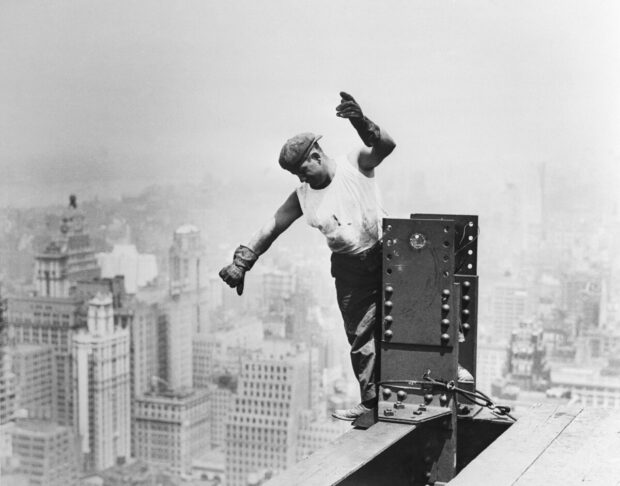
In a time full of fears, a building should surpass everything that has existed: shortly after the outbreak of the global economic crisis, the foundation stone for the Empire State Building was laid. Thousands risked their lives on the construction site.
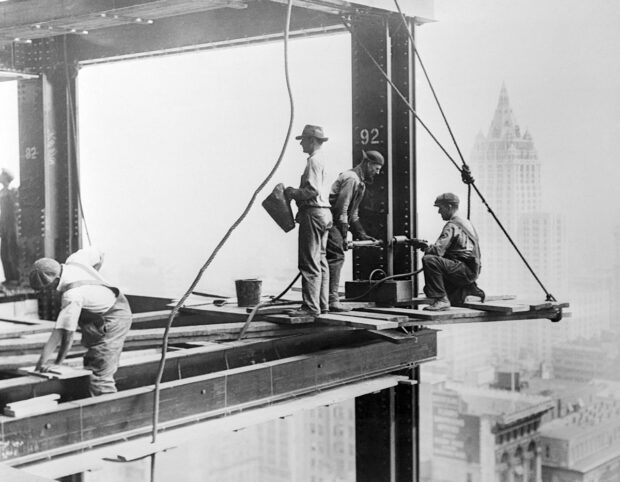
The din on the streets of New York only plays a minor role at a height of 300 meters. The workers set the tone on the rust-red steel frame of the Empire State Building. Unsecured fitters pull a new girder into position right on the precipice, while a stoker, a worker with a portable furnace, catapults a glowing rivet bolt into the air.
A balancing act follows for the catcher: he has to fish the bolt out of the air with a metal bucket and stands on a steel beam no more than 15 centimeters wide. It has to be done quickly; With a targeted hammer blow, two rivet hammers drive the still glowing object into the steel. The workers fearlessly balance on the thin steel edge to the next girder.
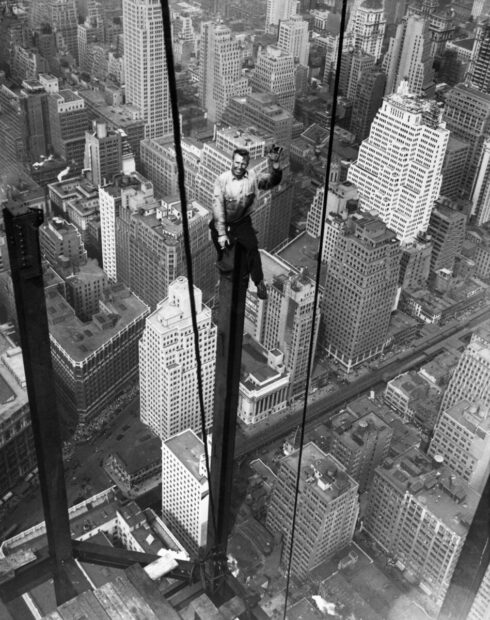
In a time full of fear, these people’s natural fear of heights does not seem to exist up above the city: in March 1930, five months after the outbreak of the Great Depression, the foundation stone for the Empire State Building was laid. The building should surpass everything that has come before. Thousands risked their lives on the construction site — the prospect of a fixed salary had lured them to the brink.
From an economic point of view, the monumental building was at least as daring as the steelwork at dizzying heights: the planned 25,000 square meters of office space for rent seemed extremely bold even before the stock market crash in October 1929.
Nevertheless, the investors around the millionaire John J. Roskob announced on August 29, 1929, that they wanted to build the tallest building in the world on the corner of Fifth Avenue and 34th Street in place of what was then the Waldorf Astoria Hotel. The title alone promised high returns.
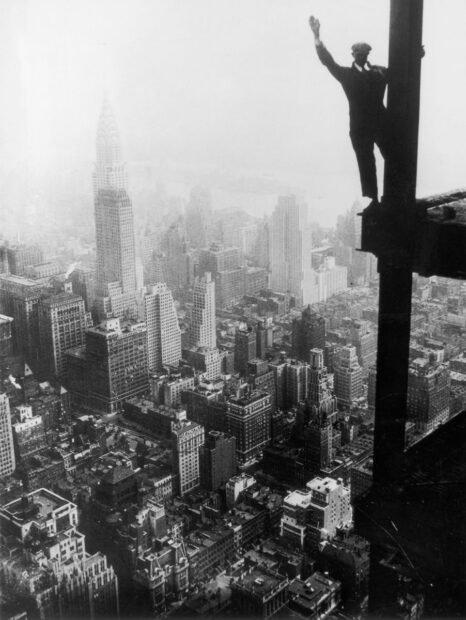
Balanceakt: Auf einem Stahlträger posiert ein Arbeiter am Abgrund. Unter ihm geht es 300 Meter in die Tiefe.
The total height of 305 meters planned in the first construction plans would have sufficed for the project if the Chrysler Building a few streets away had not hit the headlines in 1929: In the middle of the planning phase for the Empire State Building, workers riveted a metal dome inside the Chrysler Building. Within a few hours, they hoisted the construction to the top of the building, which now reached a height of 319.4 meters — and thus thwarted Roskob’s plans.
The architect of the Chrysler Building, William van Alen, kept the purely decorative dome a secret until the end because he wanted to win the competition for the tallest building in the world with it.
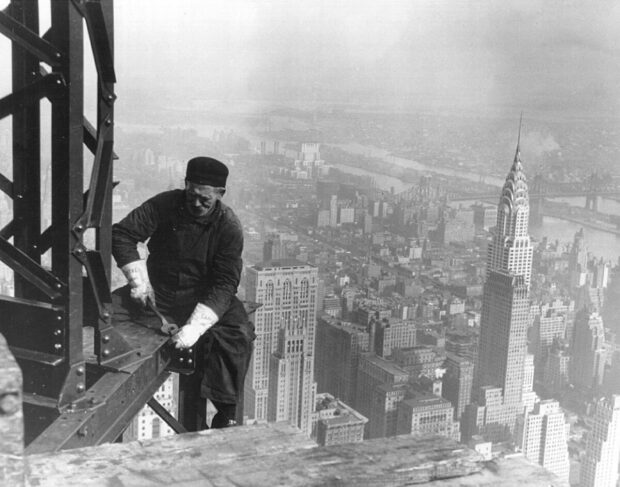
The investors did not want to accept this. It would be too risky to invest millions of dollars in only the second tallest building. Aborting the project was out of the question for them. So the architects had to go back to the drawing board — and found a solution: They raised it to 320 meters and also planned an anchor mast for airships that were to moor on their transatlantic route to the building. This gained another 61 meters.
“You were not afraid of heights”
Regardless of the extra work, they were willing to meet the planned completion date. So the pressure increased on the roughly 3,500 workers who had to build around four and a half floors each week. It was probably just luck that, despite the pace of construction and the inadequate safety precautions, only five workers were killed by the time it was completed.
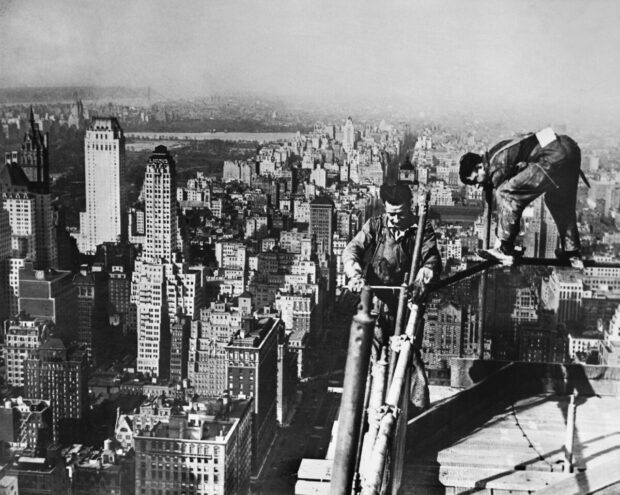
Daring: During the assembly work on the scaffolding, this worker even stands on the scaffolding that was being built on what was then the tallest building in the world.
The everyday life-threatening balancing act of the steelworkers soon established the myth of the “skywalkers”. It was mainly men from the Mohawk tribe who were hired by the hundreds in this dangerous construction site job.
The reputation that they were fearless in dealing with heights had preceded them: In 1886 Mohawks had been hired to build a bridge over the St. Lawrence River on their reservation near Montreal. The experienced workers could hardly believe what they were seeing. “They had no fear of heights. Without any experience in steel construction, they simply climbed into the arch of the bridge and balanced at least as casually on the steel girders as our most experienced rivet bats”, described a foreman.
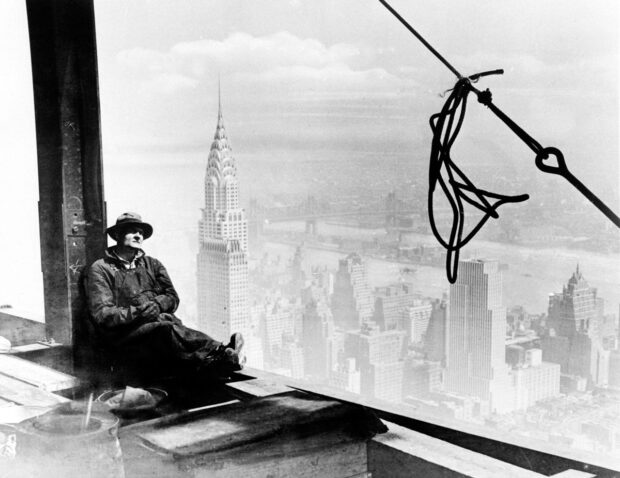
Take a deep breath: Almost six months before the completion of the Empire State Building, this steel worker took a break on September 24, 1930. Behind him is the Chrysler Building, which was the tallest building in the world until the Empire State Building was completed.
It was no different on the Empire State Building. Always close to the abyss, without a safety rope, they drove rivet after rivet into the skeleton of what was then the highest construction site in the world. But the impression was wrong. “A lot of people think we’re not afraid of heights,” said Kyle Karonhiaktatie Beauvais, fifth-generation Mohawk steelworker, for a traveling exhibition about the history of the Mohawk on large construction sites in 2002. “But that’s not true. We’re just as scared as everyone else. The only difference is that the Mohawk may handle it better.”
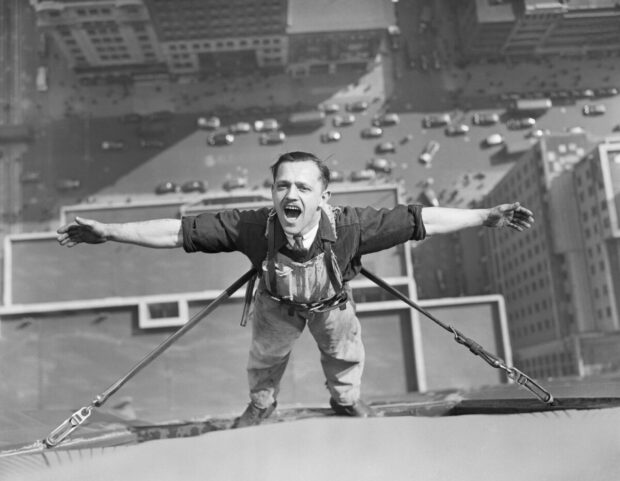
And the Mohawk had to do that too, as there was poverty and unemployment on the reservation. New York’s construction sites, on the other hand, offered an alternative. As a steelworker, you could at least make ends meet with your family. But they toiled around 13 hours a day – with an hourly wage of less than two US dollars.
The shell was up after only eleven months. The Empire State Building was not only completed in record time but also with a record-breaking low budget. The building itself cost investors $24 million — just under half of the expected cost.
On May 1, 1931, the job was done, and American President Herbert Hoover opened the building at 11:15 a.m. at the push of a button from his Washington office.
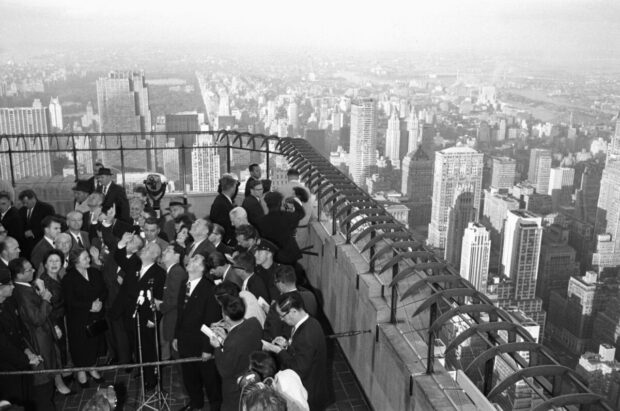
Investors’ dreams, however, should not come true anytime soon. They wanted to build not only the tallest but also the most profitable building.
They achieved the former, but not the latter: New Yorkers mocked the “Empty State Building” for years after its completion. In the middle of the economic crisis, there was no interested party for the office space. It would be another 19 years before the iconic structure made its first profit in 1950.
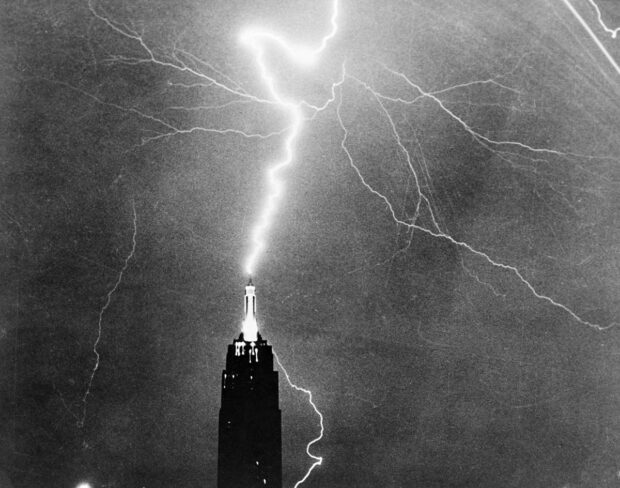
In 1933 the skyscraper became the backdrop for the box office hit “King Kong”. Like the monkey in the film, dozens of people later fell from the building – mostly suicides. Bars have long blocked the path of those who are weary of life.
In 1945 a bomber got lost in the fog and crashed into the 80th floor. 14 people died. A female suicide was blown onto a ledge by a gust in 1979 and survived.
Like us on Facebook for more stories like this: